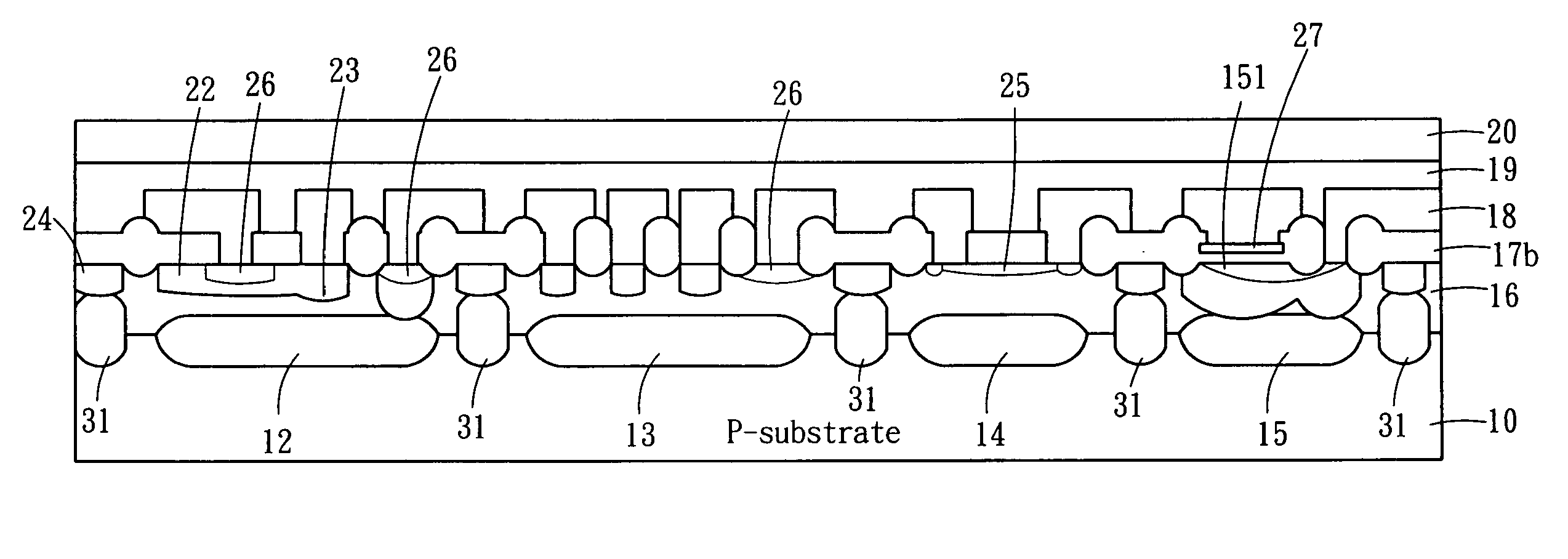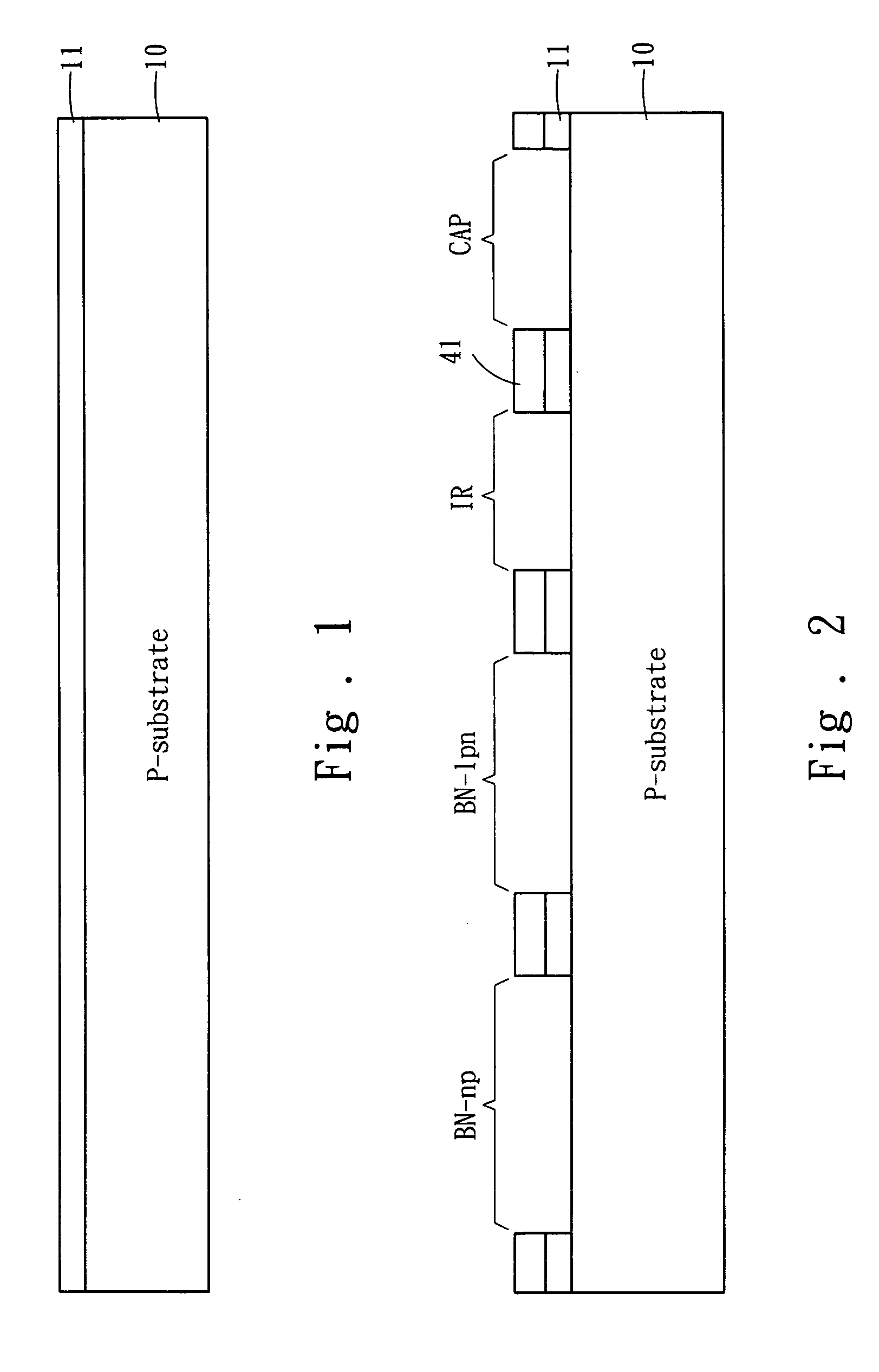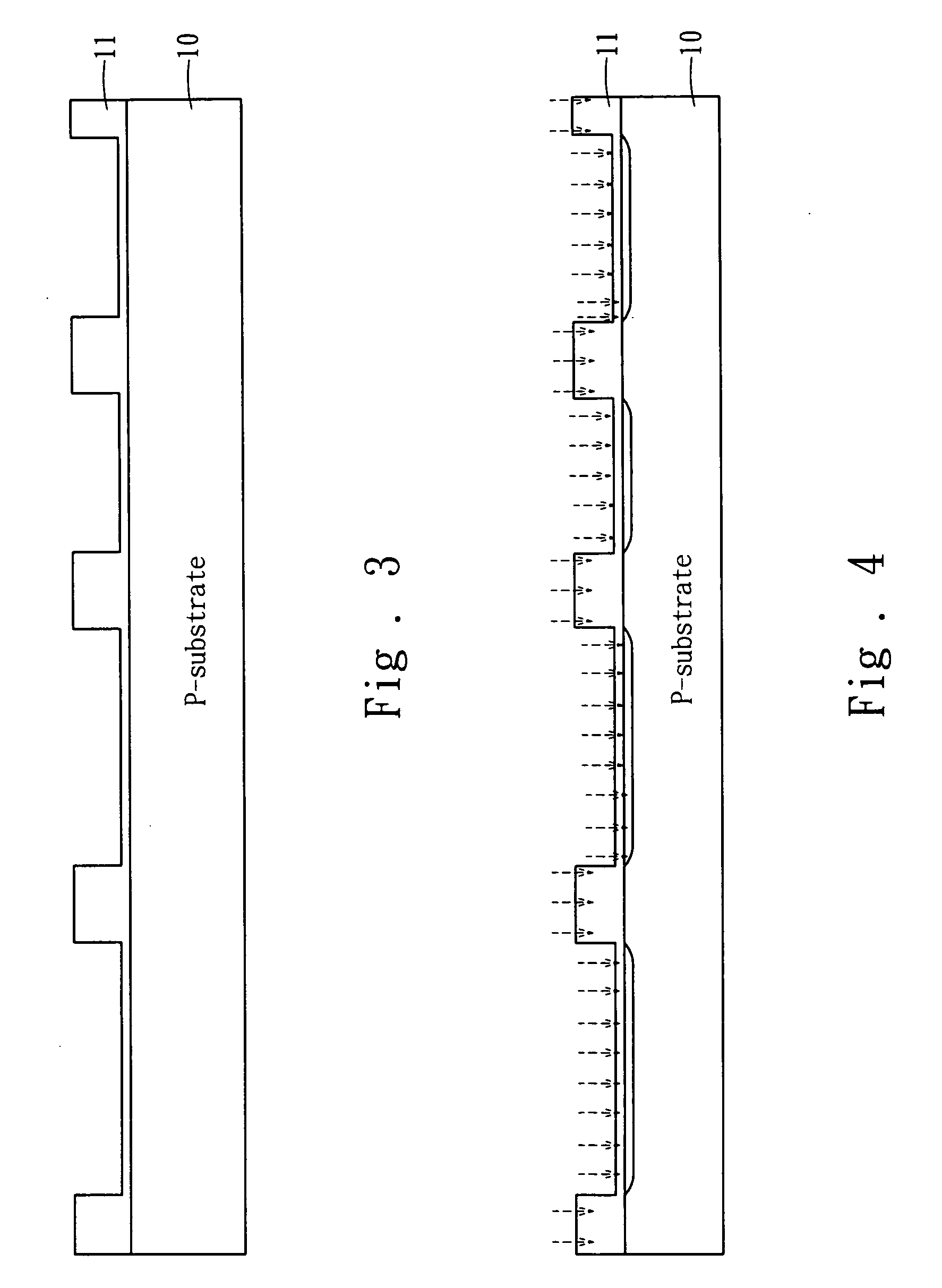Method for fabricating bipolar integrated circuits
a technology of integrated circuits and fabrication methods, applied in the direction of resistors, diodes, semiconductor devices, etc., can solve the problems of unavoidable alignment errors, wafer area has not reached its best utilization rate, ic integration level has not reached its maximum, etc., to promote the integration level of integrated circuits, eliminate alignment errors resulting from multiple alignment operations of conventional technology, and accurately control the fabrication process
- Summary
- Abstract
- Description
- Claims
- Application Information
AI Technical Summary
Benefits of technology
Problems solved by technology
Method used
Image
Examples
Embodiment Construction
[0017] The present invention is to be described below in detail in cooperation with the drawings.
[0018] Refer to from FIG. 1 to FIG. 28 diagrams schematically showing the cross sections of the integrated circuit fabricated according to the method of the present invention. As shown in FIG. 1, a P-type substrate 10 is provided firstly, and an initial oxide layer 11 is formed on the surface of the P-type substrate 10. Next, as shown in FIG. 2, via a photolithographic process and a photoresist layer 41, the oxide layer 11 is etched to form BN-np, BN-lnp, IR (Implant Resistor), and CAP (Capacitor) regions of an N-type buried layer, which is needed in the succeeding procedures.
[0019] Next, as shown in FIG. 3, the P-type substrate 10 is pre-oxidized with a thermal oxidation process. Then, as shown in FIG. 4, N-type ions, such as Sb+ ions, are implanted into the BN-np, BN-lnp, IR, and CAP regions. Next, as shown in FIG. 5, a drive-in process is used to form an N-type NPN-transistor buried...
PUM
 Login to View More
Login to View More Abstract
Description
Claims
Application Information
 Login to View More
Login to View More - R&D
- Intellectual Property
- Life Sciences
- Materials
- Tech Scout
- Unparalleled Data Quality
- Higher Quality Content
- 60% Fewer Hallucinations
Browse by: Latest US Patents, China's latest patents, Technical Efficacy Thesaurus, Application Domain, Technology Topic, Popular Technical Reports.
© 2025 PatSnap. All rights reserved.Legal|Privacy policy|Modern Slavery Act Transparency Statement|Sitemap|About US| Contact US: help@patsnap.com



